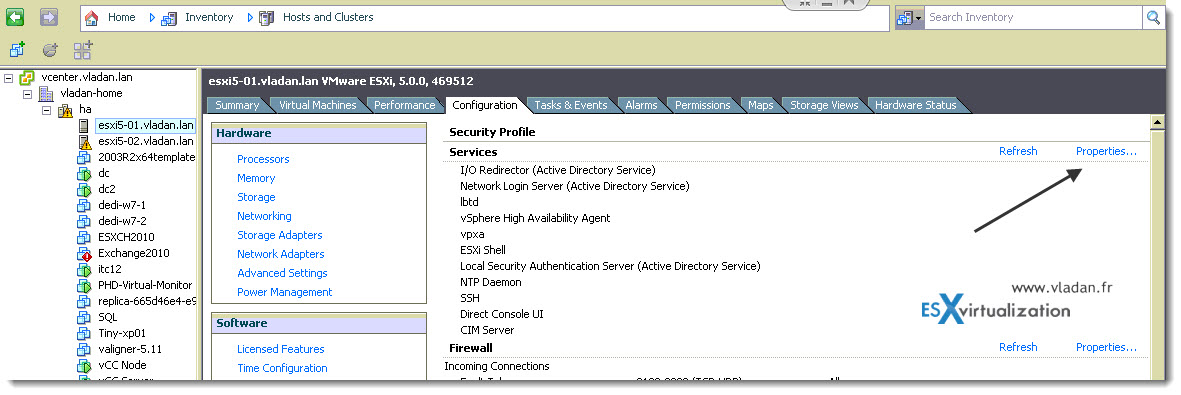

- How to ssh from mac into vsphere how to#
- How to ssh from mac into vsphere upgrade#
- How to ssh from mac into vsphere iso#
When disabling SSH, current sessions stay active and don’t end. The above methods takes effect immediately, no need to reboot. Use ‘false’ instead of true to disable SSH. ssh.set allows you to change the state of SSH. This time we press ALT + F1 to get a TTY login session. We open a Remote Console (or Web Console) via the vSphere Client. Navigate to Troubleshooting Mode Options.Įnabling SSH via the Shell in Remote Console This method involves opening a Remote Console or a Web Console window for the vCenter VM in the vSphere Client. Wait till they appear and then select Edit.Ĭlick the Slider button for Enable SSH Login and click OK The settings can take a few seconds to appear with Enable / Disable. Then click on your vCenter node you want to enable with SSH.Ī new browser window will open to the vCenter VAMI login page on port 5480. In the left pane click on System Configuration under Deployment. Navigate to the Menu and select Administration. For example ( You can also be redirected to the VAMI from within the vSphere Client in vCenter 7. This can be directly accessed via a URL over port 5480. This method involves enabling SSH via the vCenter Server Management Interface (VAMI). We have a few different methods when needing to enable SSH on vCenter 7.Įnable via the Web Client / VAMI Interface Unless vCenter 7 was deployed with SSH enabled by default it is disabled. We are using ESXi 4.1, my bad for writing ESX.There are often times you may want to directly SSH into the vCenter Server Appliance (VCSA).
How to ssh from mac into vsphere upgrade#
I'm willing to bet they aren't running ESX, but rather GSX (the old VMserver product).īTW, ESX is a dead product, upgrade to ESXi :)

If you have Cisco switches, you can set them up to only allow a single MAC address behind a port. (Either that or you have a hub for a core switch.) I actually don't know why it would need to talk to the main host, what you will see if its GSX is you'll see 2 MAC address's behind a port. If you can put a packet sniffer (Wireshark) on your LAN that means you can do span/mirror ports, and at that point if you switches support that I should hope you should have MACaddress/port tables in your switches. You mention swtich forensics, do you think I could put a packet sniffer on our LAN and track the traffic to the IP of that VM, as some point the ESX host will have to talk to it. I suspect there is a rogue ESX Host somewhere on our network and that is the one I'm after. We only have 3 ESX Host and I've searched them for this VM without success. If some one has stood up a rogue ESX host, then switch forensics is the best way to find it. No managed switches yet, but that's on the to-do list. It is the HOST that I'm trying to identify. Connect to your server and click on the Storage option on the main screen.
How to ssh from mac into vsphere iso#
Follow the steps below in order to copy the ISO into server.
How to ssh from mac into vsphere how to#
How to Copy ISO Files into Datastore on vSphere Server. What I'm after is the IP of the HOST where that VM is running from. After you have installed ESXi and created a new virtual machine, you should add the ISO to vSphere Datastore. I ALREADY know the MAC address of that VM, this is how I found it was a VM from VMWare in the first place. Maybe I didn't explained the issue properly. I strangely miss the game of "I can ping it, but have no clue what it is!". Throw a ping -t from your notebook while plugged into your core switch and play disconnect the network segment till it quits responding. Don't have managed switches? Go buy some 2960S LAN lite's, they are worth their weight in gold for random crap like this. Īfter that if you have managed switches, and look up the mac address in their tables. Use the mac address to find out against the vendor of the host server (will give you a decent clue).

Ping it, then arp -a and look up its mac address. So how do I find the IP address of the HOST running that guest VM ? On the VM, I have tried vmware-checkvm -p and it returns: ESX Server I can ping it, I can SSH to it, I can log into it but I don't know where it is running from. We have a rogue VM (Ubuntu 8.04) on our LAN.


 0 kommentar(er)
0 kommentar(er)
